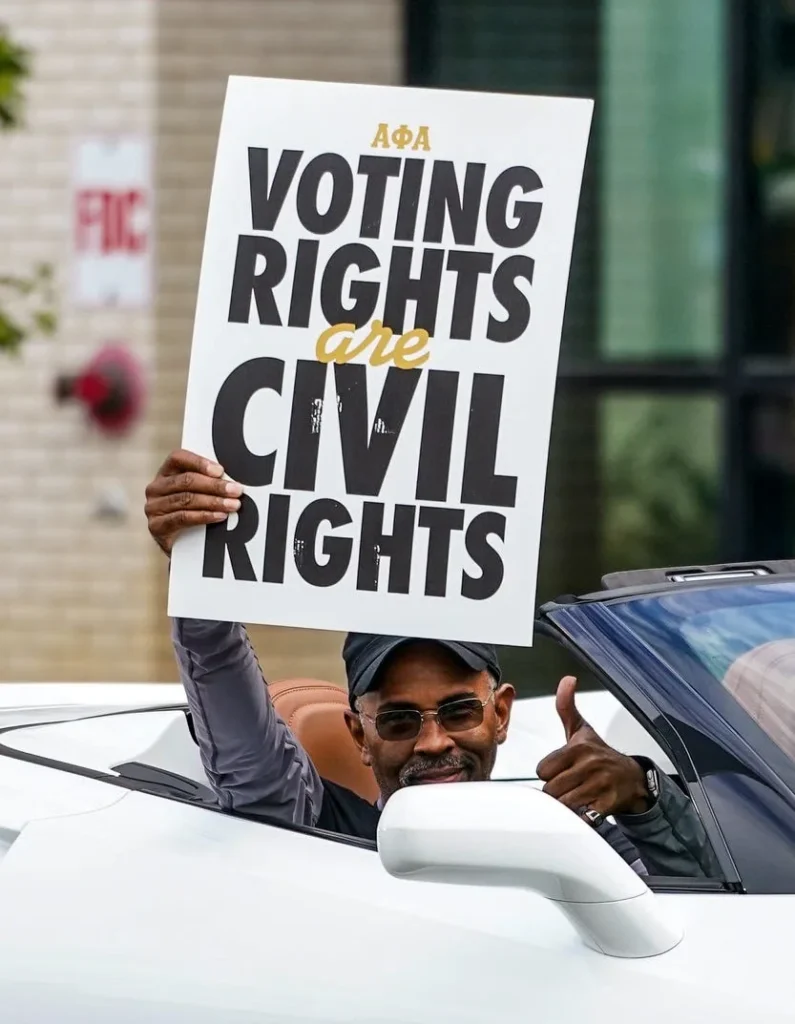In a major development concerning American democracy, the U.S. Supreme Court has temporarily blocked a lower court decision that significantly weakened the 1965 Voting Rights Act. This move comes as a relief to voting rights advocates, civil rights groups, and millions of voters who feared the rollback of protections that have safeguarded fair elections for decades.
The court’s intervention signals that the legal debate over voting rights is far from over. It also raises important questions about how voting laws will be enforced ahead of the upcoming 2026 midterm elections and beyond.
What Is the 1965 Voting Rights Act?
The 1965 Voting Rights Act is a landmark piece of legislation signed into law by President Lyndon B. Johnson. It was created during the height of the Civil Rights Movement to end racial discrimination in voting.
Key points of the Act include:
- Banning literacy tests and other discriminatory practices that were historically used to prevent Black Americans from voting.
- Federal oversight of states and counties with a history of voting discrimination.
- Preclearance requirements, meaning certain states had to get federal approval before making changes to voting laws or practices.
Over the years, the Voting Rights Act has played a critical role in ensuring fair access to the ballot, particularly for minorities. However, the law has also faced numerous legal challenges and rollbacks.
Why Did the Supreme Court Pause the Lower Court Ruling?
On July 2, 2025, the Supreme Court issued a stay — a temporary pause — on a recent decision by the U.S. Court of Appeals for the 8th Circuit. The appeals court had ruled that private individuals and civil rights groups could no longer sue under Section 2 of the 1965 Voting Rights Act.
Why This Matters:
Section 2 prohibits voting laws or practices that discriminate based on race, color, or language. For decades, most lawsuits challenging voter suppression were filed under this section by private citizens and advocacy groups — not just the U.S. Department of Justice (DOJ).
If the appeals court’s ruling had gone into effect, it would have eliminated the right of individuals and organizations to challenge racist or unfair voting laws in court. That would have left only the DOJ — which has limited resources — to enforce the law.
The Supreme Court’s pause means that, at least for now, Section 2 remains fully enforceable by both private parties and the government.
The Case That Sparked This Debate
The case originated in Arkansas. Civil rights groups challenged a newly drawn legislative map, arguing it diluted the voting power of Black voters, violating Section 2 of the Voting Rights Act.
A federal district judge agreed, but the state appealed. The 8th Circuit then ruled that private parties do not have the right to sue under Section 2, breaking with decades of legal precedent.
National Fallout:
The ruling caused widespread concern because private lawsuits have historically been the main way to fight voter suppression. In fact, most major victories in voting rights law — including cases involving gerrymandering and voter ID laws — were won by private litigants, not the government.
Reactions From Across the Political Spectrum

Civil Rights Groups:
Organizations like the NAACP, ACLU, and League of Women Voters praised the Supreme Court’s decision to intervene.
“This pause gives voters a chance to breathe,” said Janai Nelson, president of the NAACP Legal Defense Fund. “Without the ability to sue, our communities would be silenced.”
Voting Rights Advocates:
Experts say allowing only the DOJ to bring lawsuits would be impractical and dangerous, especially in an election year. With limited staff and resources, the DOJ simply can’t monitor every state and county.
Conservative Leaders:
On the other side, some Republican lawmakers and state officials argued that the 8th Circuit was right to limit lawsuits, saying that only the federal government should enforce federal laws.
They also claimed that private lawsuits are sometimes politically motivated, and that states should have more freedom to manage their own elections.
What Happens Next?
The Supreme Court has not yet ruled on the merits of the case. The justices only issued a temporary stay, meaning the issue is likely to return to the court in full in the coming months.
What This Means:
- Private parties can still sue under Section 2 for now.
- States are still bound by the anti-discrimination rules in the Voting Rights Act.
- The legal fight will likely return to the Supreme Court for a final ruling, possibly in the next term.
This case could lead to one of the most consequential decisions on voting rights in over a decade.
Historical Context: A Pattern of Weakening the Voting Rights Act
This isn’t the first time the Voting Rights Act has been under threat.
Shelby County v. Holder (2013):
In this landmark case, the Supreme Court struck down the preclearance formula, which required certain states to get federal approval before changing voting laws. The ruling effectively gutted the heart of the Voting Rights Act, and led to a wave of voter ID laws and redistricting efforts that critics say were aimed at suppressing minority voters.
Brnovich v. Democratic National Committee (2021):
The Court upheld Arizona voting rules that made it harder to vote in certain areas. The decision further narrowed how Section 2 could be applied.
The current Arkansas case is seen as the next major battle over the Voting Rights Act.
Why the 1965 Voting Rights Act Still Matters Today
While the Act was passed over 60 years ago, the fight for fair voting access is ongoing. In recent years, many states have passed laws that:
- Shorten early voting periods
- Close polling stations in minority neighborhoods
- Purge voter rolls
- Ban or limit absentee voting
Voting rights groups argue that without strong protections like those in the 1965 Voting Rights Act, millions of voters — especially from minority communities — could be disenfranchised.
What Voters Can Do
With so much uncertainty surrounding the future of voting rights, it’s important for citizens to stay informed and proactive. Here’s how you can protect your vote:
1. Stay Updated on Local Laws
Voting laws vary by state. Know your rights and any changes that may affect your ability to vote.
2. Support Organizations That Defend Voting Rights
Groups like the Brennan Center for Justice, ACLU, and Common Cause work tirelessly to protect voter access.
3. Vote in Every Election
From local school board elections to presidential races, every vote matters. Turnout is one of the most powerful tools against voter suppression.
4. Contact Your Representatives
Let your lawmakers know that protecting the Voting Rights Act is important to you.
Final Thoughts: A Temporary Win, But a Long Battle Ahead
The Supreme Court’s decision to pause the lower court ruling is a small but critical victory for voting rights in the United States. However, it’s only temporary. The future of the 1965 Voting Rights Act now hangs in the balance, with more legal battles on the horizon.
This moment should serve as a wake-up call. Democracy doesn’t protect itself — it relies on engaged citizens, active courts, and a fair legal system to ensure every American can vote freely and fairly.
Read Next – Candace Owens: See the Right-Wing Political Commentator and Activist’s Career






